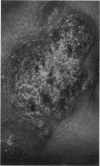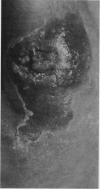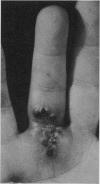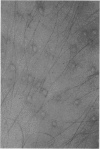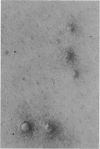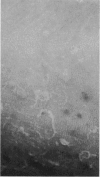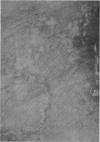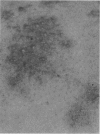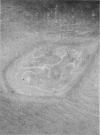Abstract
The formation of pus as a result of an inflammatory response to a bacterial infection is well known. Not so well appreciated, however, is the fact that many other nonbacterial agents such as certain fungi, viruses and parasites may provoke pus formation in the skin. Also heat, topical applications, systemically administered drugs and some injected materials can do likewise. Numerous skin diseases of unknown etiology such as pustular acne vulgaris, pustular psoriasis and pustular dermatitis herpetiformis can have bacteriologically sterile pustules. The importance of considering nonbacterial causes of pus-forming conditions of the skin is obvious from a diagnostic and therapeutic point of view.
Full text
PDF



Images in this article
Selected References
These references are in PubMed. This may not be the complete list of references from this article.
- BIRT A. R., WILT J. C. Mycology, bacteriology, and histopathology of suppurative ringworm. AMA Arch Derm Syphilol. 1954 Apr;69(4):441–448. doi: 10.1001/archderm.1954.01540160043008. [DOI] [PubMed] [Google Scholar]
- FISHER A. A., CHARGIN L., FLEISCHMAJER R., HYMAN A. Pustular patch test reactions; with particular reference to those produced by ammonium fluoride. Arch Dermatol. 1959 Dec;80:742–752. [PubMed] [Google Scholar]
- Freinkel R. K. Pathogenesis of acne vulgaris. N Engl J Med. 1969 May 22;280(21):1161–1163. doi: 10.1056/NEJM196905222802106. [DOI] [PubMed] [Google Scholar]
- GAVELIN G. E., KNIGHT C. R. HERPES SIMPLEX INFECTION OF THE FINGER. Can Med Assoc J. 1965 Aug 21;93:366–367. [PMC free article] [PubMed] [Google Scholar]
- O'ROURKE F. J. Furuncular myiasis due to Wohlfahrtia vigil (Walker). Can Med Assoc J. 1954 Aug;71(2):146–149. [PMC free article] [PubMed] [Google Scholar]



